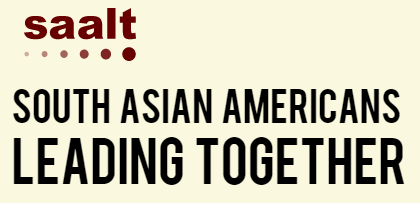South Asian Americans Leading Together (SAALT): Report 18/06/2019 – Posted in: Daily News
SOUTH ASIAN AMERICANS LEADING TOGETHER (SAALT): REPORT
For: Preliminary
Topics covered: Findings of SAALT, India vs. Global immigrants
News Flash
The population of Indian-origin people in America grew by 38% in seven years between 2010 and 2017, a South Asian advocacy group has said in its latest demographic report.
Findings of South Asian Americans Leading Together:
Indians immigrants
- There are at least 630,000 Indians who are undocumented, a 72% increase since 2010.
- The increase in illegal Indian-Americans can be attributed to Indian immigrants overstaying visas.
- Nearly 250,000 Indians overstayed their visas in 2016, therefore, becoming undocumented.
- As of August 2018, there are approximately 2,550 active Indian Deferred Action for Childhood Arrivals (DACA) recipients.
- Only 13% of the overall 20,000 DACA eligible Indians have applied and received DACA.
Global immigrants
- The population of American residents tracing their roots to South Asia grew by 40%. (it increased from 3.5 million in 2010 to 5.4 million in 2017)
- The Nepali community grew by 206.6% since 2010, followed by Indian (38%), Bhutanese (38%), Pakistani (33%), Bangladeshi (26%) and Sri Lankan populations (15%).
- There are currently at least 4,300 active South Asian Deferred Action for Childhood Arrivals (DACA) recipients.
- As far as DACA recipients from other countries are concerned, there are 1,300 from Pakistan, 470 from Bangladesh, 120 from Sri Lanka and 60 from Nepal.
- The immigrant population density of the country shows that undocumented Bangladeshi immigrants live in New York (19,000); Michigan (4,000); Virginia (3,000); and California (2,000).
- The US Immigration and Customs Enforcement (ICE) has detained 3,013 South Asians since 2017.
- US Customs and Border Patrol arrested 17,119 South Asians between October 2014 and April 2018 through border and interior enforcement.
- In the lead up to the 2020 elections, South Asians are becoming an increasingly powerful segment of the American electorate.
- According to the Current Population Survey (CPS), 49.9% of voting-age Asian American citizens cast a ballot in 2016. The number of Asian American voters in the last decade has nearly doubled from about two million voters in 2001 to 5 million voters in 2016.
- Of these, Indians account for more than 1.5 million, followed by Pakistanis (222,252) and Bangladeshi (69,825),
Income inequality
- According to the report, income inequality has been reported to be the greatest among Asian Americans.
- Nearly one percent of the approximately five million South Asians in the US live in poverty.
- There has been a rise in the number of South Asians seeking asylum in the US over the last 10 years.
Entry by Visa
- According to SAALT, since 1997, more than 1.7 million dependent spouses of H-1B visa holders have received H-4 visas.
- In 2017, 136,000 individuals received H-4 status.
- Nearly 86 percent of H-4 visa holders are from South Asian countries.
- In 2015, DHS granted work authorisation to certain H-4 visa holders.
- As of December 2017, approximately 127,000 visa holders were approved for H-4 EAD.
Poverty
- Nearly 472,000 or 10% of the approximately five million South Asians in the US live in poverty.
- Among South Asian Americans, Pakistanis (15.8%), Nepalis (23.9%), Bangladeshis (24.2%), and Bhutanese (33.3%) had the highest poverty rates.
- Bangladeshi and Nepali communities have the lowest median household incomes out of all Asian American groups, earning $49,800 and $43,500 respectively.
- Nearly 61% of non-citizen Bangladeshi American families receive public benefits for at least one of the four federal programmes including TANF, SSI, SNAP and Medicaid/CHIP, 48% of non-citizen Pakistani families and 11% of non-citizen Indian families also receive public benefits.
Source: The Hindu
You can follow us on LinkedIn and for more updates related to UPSC IAS Preparation, Like our Facebook Page and subscribe our Diligent IAS Youtube Channel
Also, Read Related Daily News
- One Health Concept
- Karnataka Protection of Interest of Depositors in Financial Institutions Act
- Iran to breach Uranium stockpile limit

